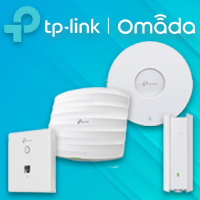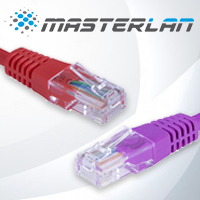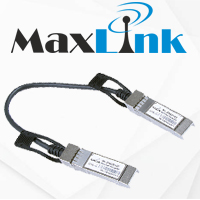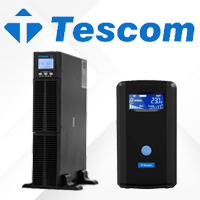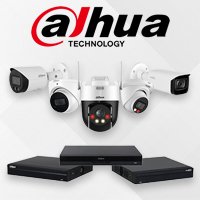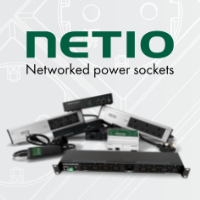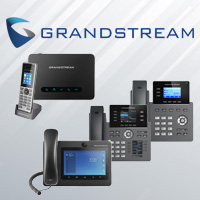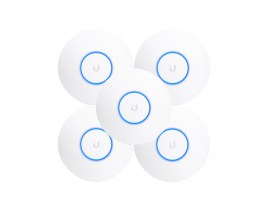
Ubiquiti UAP-AC-HD-5, UniFi AC HD Access Point 5-Pack

- Description
- Specifications
- Downloads
- Reviews
CAUTION PACKAGE DOES NOT INCLUDE POE ADAPTERS
Scalable Enterprise Wi-Fi Management
UniFi® is the revolutionary Wi-Fi system that combines enterprise performance, unlimited scalability, and a central management controller. The UniFi AC HD AP has a refined industrial design and can be easily installed using the included mounting hardware.
Easily accessible through any standard web browser, the UniFi Controller software is a powerful software engine ideal for high-density client deployments requiring low latency and high uptime performance.
Use the UniFi Controller software to quickly configure and administer an enterprise Wi-Fi network – no special training required. RF map and performance features, real-time status, automatic UAP device detection, and advanced security options are all seamlessly integrated.
Features
Save money and save time UniFi comes bundled with a non-dedicated software controller that can be deployed on an on-site PC, Mac, or Linux machine; in a private cloud; or using a public cloud service. You also have the option of deploying the compact UniFi Cloud Key with built-in software.
Powerful Hardware The UniFi AC HD AP features the latest in Wi-Fi 802.11ac Wave 2 MU-MIMO technology.
Intuitive UniFi Controller Software Configure and manage your APs with the easy-to-learn user interface.
Expandable Unlimited scalability: build wireless networks as big or small as needed. Start with one and expand to thousands while maintaining a single unified management system.
Extend Your Coverage
With the UniFi Controller software running in a NOC or in the cloud, administrators can manage multiple sites: multiple, distributed deployments and multi-tenancy for managed service providers. Below are some deployment examples.
UniFi Controller
Packed with Features
Use the UniFi Controller to provision thousands of UniFi APs, map out networks, quickly manage system traffic, and provision additional UniFi APs.
Breakthrough RF Map
Use the RF map to monitor and analyze radio frequencies for optimal AP placement, configuration, and troubleshooting.
View Your RF Environment
Use the RF environment functionality of the UniFi AC HD AP to detect and troubleshoot nearby interference, analyze radio frequencies, choose optimal AP placement, and configure settings.
Powerful RF Performance Features
Advanced RF performance and configuration features include spectral analysis, airtime fairness, and band steering.
Detailed Analytics
Use the configurable reporting and analytics to manage large user populations and expedite troubleshooting.
Wireless Uplink
Wireless Uplink functionality enables wireless connectivity between APs for extended range. One wired UniFi AP uplink supports up to four wireless downlinks on a single operating band, allowing wireless adoption of devices in their default state and real-time changes to network topology.
Guest Portal/Hotspot Support
Easy customization and options for Guest Portals include authentication, Hotspot setup, and the ability to use your own external portal server. Use UniFi’s rate limiting for your Guest Portal/Hotspot package offerings. Apply different bandwidth rates (download/upload), limit total data usage, and limit duration of use.
All UniFi APs include Hotspot functionality:
• Built-in support for billing integration using major credit cards.
• Built-in support for voucher-based authentication.
• Built-in Hotspot Manager for voucher creation, guest management, and payment refund.
• Full customization and branding of Hotspot portal pages.
Multi-Site Management
A single UniFi Controller running in the cloud can manage multiple sites: multiple, distributed deployments and multi-tenancy for managed service providers. Each site is logically separated and has its own configuration, maps, statistics, guest portal, and administrator read/write and read-only accounts.
WLAN Groups
The UniFi Controller can manage flexible configurations of large deployments. Create multiple WLAN groups and assign them to an AP’s radio. Each WLAN can be VLAN tagged. Dynamic VLAN tagging per Wi-Fi station (or RADIUS VLAN) is also supported.
802.11ac Technology
Initial 802.11ac Wave 1 SU-MIMO (Single-User, Multiple Input, Multiple Output) technology allows an earlier-generation AP, such as the UniFi AC Pro AP, to communicate with only one client at a time.
802.11ac Wave 2 MU-MIMO (Multi-User, Multiple Input, Multiple Output) technology allows a Wave 2 AP, such as the UniFi HD AP, to communicate with multiple clients at the same time – significantly increasing multi-user throughput and overall user experience.
The following describes a 5-client scenario:
MU-MIMO Assuming the same conditions, a Wave 2 AP provides up to 75% improvement* overall over a Wave 1 AP. This improvement increases wireless performance and/or serves more clients at the same performance level.
4x4 Spatial Streams At any single time, a Wave 2 AP can communicate with the following MU-MIMO clients:
• four 1x1 clients
• two 2x2 clients
• one 2x2 client and two 1x1 clients
• one 3x3 client and one 1x1 client
A 4x4 Wave 2 AP delivers up to 33% greater performance* than a Wave 1 AP that is 3x3 in both radio bands.
Real-World Performance The UniFi AC HD AP is the first UniFi 802.11ac Wave 2 AP. Combining the performance increases from MU-MIMO technology and the use of 4x4 spatial streams, the UniFi AC HD AP delivers up to 125% greater performance* than a typical Wave 1 AP.
Client Compatibility For optimal performance, use MU‑MIMO clients. SU‑MIMO clients will also benefit and gain up to 10-20% greater performance when used with the UniFi AC HD AP.
*Actual performance values may vary depending on environmental and installation conditions.
High-Density Scenarios
For high-density environments, such as a concert venue or outdoor fair where there are numerous clients in a relatively small space, we recommend the UniFi HD AP.
Both Wave 1 and Wave 2 APs offer 28 independent (non-overlapping) channels: three for the 2.4 GHz band and twenty-five for the 5 GHz band, including DFS channels.
When you use the 2.4 GHz band in a high-density location, you encounter self-interference and channel saturation. When you use the 5 GHz band, you can deploy smaller cells (coverage areas), so you can support more clients in any cell that deploys more than one AP.
With the advantages of MU-MIMO technology and 4x4 spatial streams, the UniFi HD AP can support more than triple the number of users** than a typical Wave 1 AP.
**Actual numbers may vary depending on environmental and installation conditions.
Deploy the UniFi AC HD AP in high-density environments requiring maximum wireless performance. The UniFi AC HD AP features simultaneous, dual-band, 4x4 MU-MIMO technology and convenient 802.3at PoE+ compatibility.
Easy Mounting Its sleek design seamlessly integrates into any environment (all accessories included) and is compatible with existing UAP-AC-PRO mounts.
LED Unique LED provisioning ring provides administrator location tracking and alerts for each device.
Dual Gigabit Ethernet The UniFi AC HD AP offers a secondary port available for bridging.
Superior Processing Power The UniFi AC HD AP is capable of complex operations (guest control, filtering, and other resource-intensive tasks) that may slow down a lesser-equipped AP.
Power over Ethernet (PoE) Standard The UniFi HD AP can be powered by an 802.3at PoE+ compliant switch. We recommend powering your UniFi devices with a UniFi PoE Switch (sold separately).
UniFi PoE Switch Available in 8*, 16, 24, and 48-port versions with multiple power output options, the UniFi PoE Switch conveniently offers auto-sensing IEEE 802.3af PoE/802.3at PoE+.
*The US-8 and US-8-60W do not support 802.3at PoE+.
| Caution! According to current Greek Legislation, of N.F.B.A.R. and the provisions of the P.D. 98/2017 the lawful use of this product in the frequency band 2400 – 2483,5 MHz, provides for a maximum transmit power of 100mW e.i.r.p. At this maximum power the output power of the transmitter and the gain of the antenna are both taken into account. Responsible for spectrum surveillance is H.T.P.C. This product is CE marked, P.D. 98/2017 This product is intended for indoor use. |
|
| Caution! According to current Greek Legislation, of N.F.B.A.R. and the provisions of the P.D. 98/2017 the lawful use of this product in the frequency band 5150 – 5250MHz and 5250 – 5350MHz, provides for a maximum transmit power of 200 mW e.i.r.p. At this maximum power the output power of the transmitter and the gain of the antenna are both taken into account. Responsible for spectrum surveillance is H.T.P.C. This product is CE marked, P.D. 98/2017 This product is intended for indoor use. |
| Warranties - Returns: | |
| Money Return: | Repair - Replacement: |
| 20 days | 24 months |
| Specifications | |
| Dimensions | 220 x 220 x 48.1 mm |
| Weight | Without Mounting Kit: 700 g With Mounting Kit: 830 g |
| Networking Interface | (2) 10/100/1000 Ethernet Ports |
| Ports | (2) Ethernet RJ45 (1) USB Type C |
| Buttons | Reset |
| Power Method | PoE+ |
| Supported Voltage Range | 44 to 57VDC |
| Power Supply | 48VDC, 0.5A Gigabit PoE Adapter* *5-packs do not come with PoE injectors. |
| Power Save | Supported |
| Beamforming | Supported |
| Maximum Power Consumption | 17W |
| Max. TX Power | 25 dBm |
| Antennas 2.4 GHz 5 GHz |
(2) Dual-Port, Dual-Polarity Antennas, 3 dBi each (2) Dual-Port, Dual-Polarity Antennas, 4 dBi each |
| Wi-Fi Standards | 802.11 a/b/g/n/r/k/v/ac/ac-wave2 |
| Wireless Security | WEP, WPA-PSK, WPA-Enterprise (WPA/WPA2, TKIP/AES) |
| BSSID | 4 Per Radio |
| Mounting | Wall/Ceiling (Kits Included) |
| Operating Temperature | -10 to 70° C |
| Operating Humidity | 5 to 95% Noncondensing |
| Certifications | CE, FCC, IC |
| Advanced Traffic Management | |
| VLAN | 802.1Q |
| Advanced QoS | Per-User Rate Limiting |
| Guest Traffic Isolation | Supported |
| Power Save | Supported |
| WMM | Supported |
| Concurrent Clients | 500+ |
| Supported Data Rates (Mbps) | |
| 802.11a | 6, 9, 12, 18, 24, 36, 48, 54 Mbps |
| 802.11n | 6.5 Mbps to 450 Mbps (MCS0 - MCS23, HT 20/40) |
| 802.11ac | 6.5 Mbps to 1.7 Gbps (MCS0 - MCS9 NSS1/2/3/4, VHT 20/40/80) 58 Mbps to 1.7 Gbps (MCS0 - MCS9 NSS1/2, VHT 160) |
| 802.11b | 1, 2, 5.5, 11 Mbps |
| 802.11g | 6, 9, 12, 18, 24, 36, 48, 54 Mbps |
YOU HAVE SEEN RECENTLY















